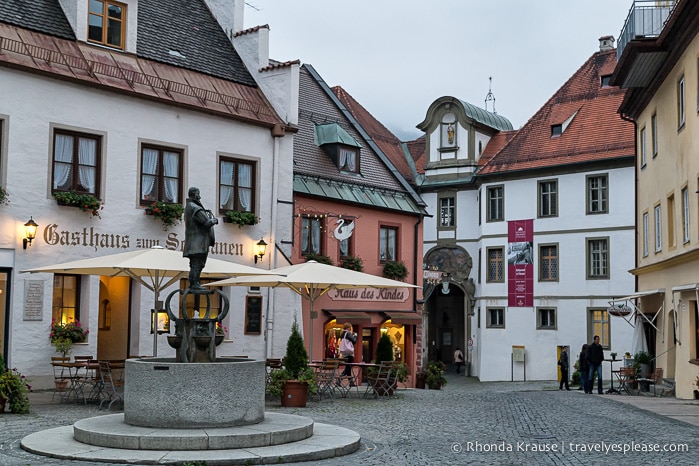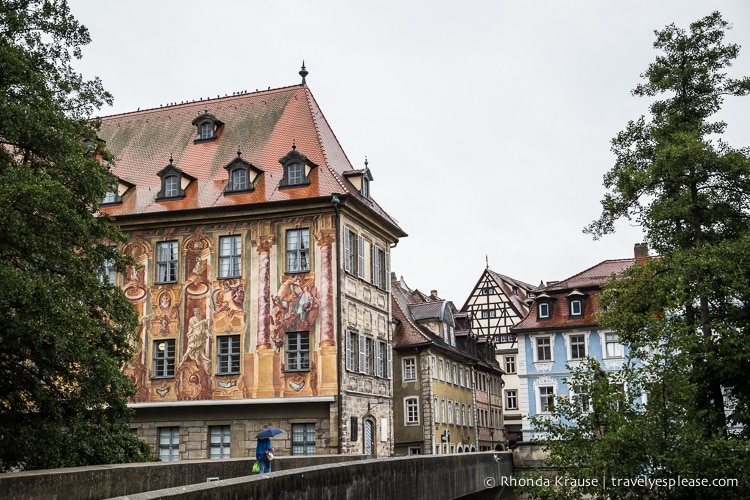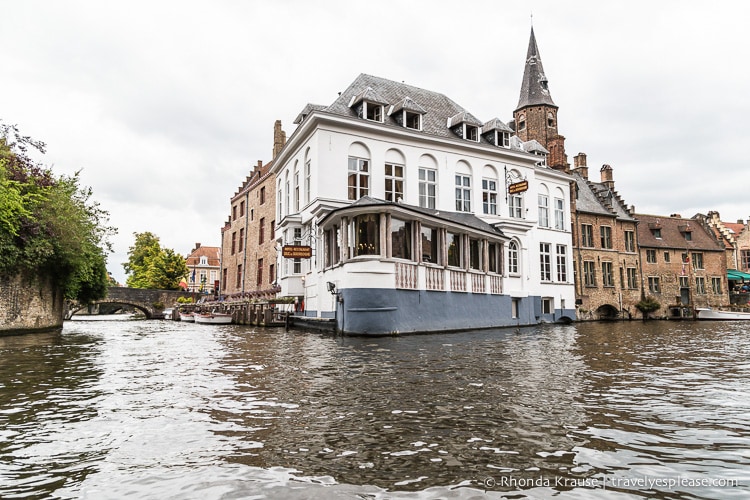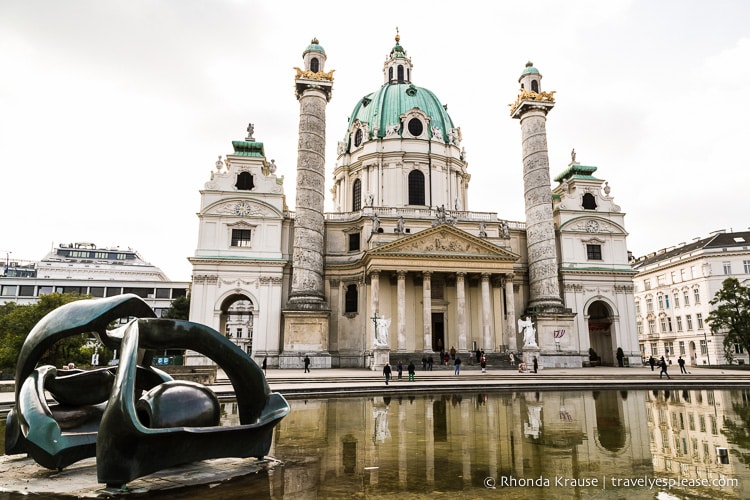What to Expect on Your First Trip to Europe- A First Time Visitor’s Guide
Purchases made through links earn us a small commission, at no extra cost to you.
Ever since my first trip to Europe as a teenager in 1998, it’s been one of my favourite places to travel to. There are a lot of reasons why I love Europe- the history, the architecture, the way of life- but mostly, I love it because I find travelling there quite easy.
Europe is a place that I didn’t experience a lot of culture shock. Of course, many things are different than in Canada, but nothing too extreme that I felt uncomfortable. Still, I remember being nervous to visit Europe for the first time. I was especially anxious on my second visit, since I was travelling there solo.
It is absolutely normal to feel apprehensive when travelling somewhere for the first time. A lot of that nervous energy comes from simply not knowing what to expect.
What to Expect on Your First Trip to Europe
We put together this first time visitor’s guide to help ease the minds of travellers planning their first trip to Europe. Some of the points are small, specific things you may be wondering about, others are more general, helpful tips.
If you’ve visited Europe before, this list will sound obvious. For those of you who are planning your first trip to Europe, I hope you find this helpful. (This is general and based on our personal experiences, so keep in mind that things may vary between regions in Europe).
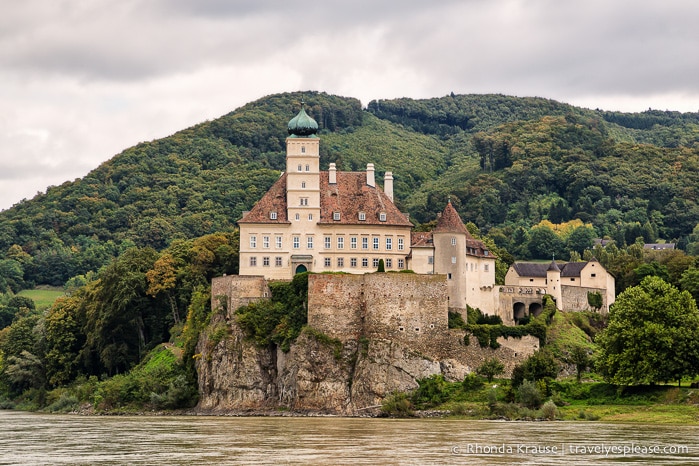
Electricity in Europe
- The electricity supply in Europe is 220v, which means that appliances using North American voltage (110v) will need a transformer. Many devices like cell phones, laptops, tablets and camera chargers have built in converters and will automatically accommodate the change in voltage (110-240V). Read the label to be sure. I travel with dual voltage hair appliances (blow dryer, hair straightener) so I don’t need to bring a converter.
- You will need an adaptor to plug in your electronics. Most of the sockets in Europe take two round pins (Switzerland also has three pins). Great Britain and Ireland take three rectangular pins.
Hotels
- Hotel rooms in Europe can sometimes be smaller than those in North America. This was definitely the case in Paris, and our hotel in Wurzburg, but we didn’t encounter really small hotel rooms anywhere else in Europe.
- When booking rooms, we found the bed descriptions to be quite confusing. It still confuses me! Basically, what you can expect is two twin beds pushed together or two single mattresses (with separate duvets/comforters) on one double bed frame.
- Bring your own washcloth. For some reason, the hotels in Europe don’t provide small cloths for washing your face.


Restaurants
- Bottled water will be given to you in restaurants. It is not the norm in most places to be served tap water. Most of the time, when we asked for tap water we were given a funny look and told “no.” Also, if you don’t like carbonated water, make sure you order your water with “no gas”.
- People in Europe seem to eat dinner later than in North America, or at least a lot later than I like to eat. Also, expect to linger longer in restaurants. In general, staff are not in a hurry to bring the bill unless you ask for it.
- In general, tipping in Europe is appreciated, but it’s not expected like in North America. Tips also tend to be more modest, such as rounding the bill up to a convenient number. Usually the menu will say if service is included. If it’s not, tipping 5% is normal and 10% is considered a big tip.
- Restaurants in popular tourist destinations/large cities have their menu in multiple languages.
- At some places, bread will be put on your table whether you ask for it or not. If you don’t want to pay for it, don’t eat it.
- A typical breakfast in some countries is a pastry and cup of coffee. In other places you’ll see a lot of cold cuts and cheese for breakfast. While in France, only three days into our trip to Europe, Mike was really craving a breakfast of bacon and eggs! Ireland was different though, and I was regularly served hot, hearty breakfasts more similar to what we eat in Canada.

Transportation in Europe
- Trains are generally the best way to get around in Europe. The rail network is comprehensive, ticket costs are rather affordable, and the scenery is gorgeous. Trains are a great way to visit many destinations quickly and efficiently. We loved travelling by train in Europe!
- If you plan on visiting numerous countries or making a lot of train trips in Europe, consider purchasing a Eurail Pass. It may work out to be cheaper than purchasing individual tickets, plus eliminates the time and hassle of buying tickets at the station.
- The public transportation networks in the big cities are quite good as well. The metros are easy to use and will save you both money and time getting place to place in large cities.
- If you need to take a taxi, make sure it is from a reputable company. Do some research before hand to find out what the “official” taxi company is called and what the identifying features of their cabs are. When in doubt, ask your hotel for recommendations.
- Bike share programs are becoming more and more popular around Europe. In many cities you’ll find stands where you can rent a bike for a short period of time and return it to any rental point in the city. We used bikes to get from place to place in Paris all the time.
- European cities are very walkable. Many of the main attractions are in close proximity to each other, so bring a comfortable pair of shoes.
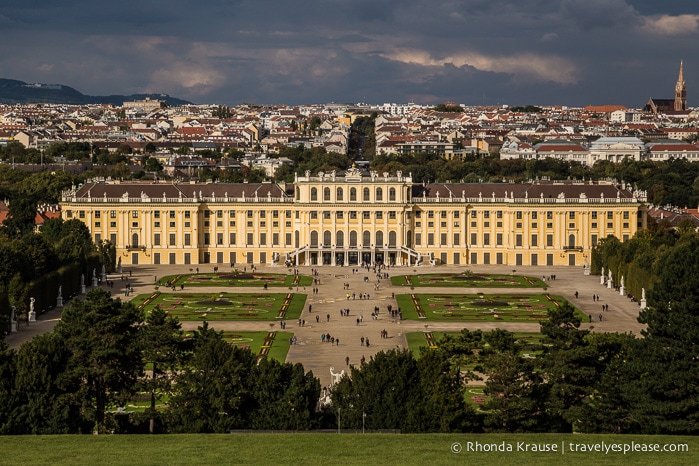
Public Washrooms
- Public washrooms are available, but be prepared to pay to use them. We paid anywhere between €0.50 to €1.00 to use the washroom. Sometimes there was a turnstile you had to put coins in, other times there was a dish of coins on the counter. While I hated having to pay, I liked that these washrooms were kept clean more often than not.
- Some large cities, such as Paris and London, have with coin-operated WCs on street corners. After you insert the money, the door opens, and you have 15 minutes of toilet use. After you leave, the chamber disinfects itself.
- We came across a few coffee shops and fast food places that had the code to their washroom printed on the receipt, so the only way you could use their WC was to make a purchase.
- If you walk confidently into a cafe, especially one that’s busy or has outdoor seating, you’ll be able to get away with using the washroom without making a purchase. Hotels are good for this too- just walk in like you belong there!
Safety in Europe
- I’ve found Europe to be quite safe, but just like anywhere else you need to be alert and use your common sense.
- Pick pocketing is a problem in big cities and around popular tourist attractions. Keep your valuables close and always be aware of your surroundings, especially on the subways. Watch for people holding a jacket or newspaper over their arm, as they use this to hide their hands while they pick someone (we saw this a lot during our four days in Paris). Pick pockets like to set up distractions such as asking for directions or inviting you to sign a “petition” (also common in Paris).
- Do your research so you know which parts of town should be avoided, especially at night.

Wheelchair Accessibility
- Wheelchair access to public buildings are far from common in many European countries. We noticed curb cuts are present in some cities but not others. The cobblestone sidewalks and streets in many cities pose a bit of a challenge for wheelchair users.
- It can be useful to contact tourism offices and local transit providers regarding accessibility before you travel. Sage Travelling is an excellent website that provides comprehensive accessibility reviews of many European cities.
What to See on Your First Trip to Europe
It can be hard to decide where to go and what to see on your first trip to Europe because there are so many fantastic options. For some suggestions and a sample itinerary, read our post 5 weeks in Europe- Our Itinerary’s Hits and Misses. Our Europe Travel Guide is also a great source of inspiration, as is our list of the best cities to visit in Europe.

More Tips For Visiting Europe For The First Time
Now that you know what to expect in Europe, here are a few more tips for travelling to Europe for the first time.
- Try and master a few phrases in the local language. We found that English was widely spoken in the major cities, but people still appreciated us making an effort to communicate with them in their own language.
- Learn about and respect the local customs. Many churches require that your shoulders and knees be covered to enter.
- Sign up for a credit card with no foreign transaction fees.
- Notify your bank that you will be away and make sure that your debit cards can be used in Europe. Our bank assured us that our debit cards would work at machines with the Visa/Plus logo, but we had more than a few instances where we couldn’t withdraw money (especially in Budapest!)
- Note that many cities in Europe have different names in different languages. For example, Munich is München, Vienna is Wien, Florence is Firenze, and Prague is Praha. This is especially important to be aware of when taking the train.
- Be open minded and welcoming of new experiences. Don’t expect things to be the same as home.
- To minimize time spent in transport (and the fatigue that can come from it), plan your itinerary so that you can spend at least 3 days in major cities. Choose destinations that are close to other places of interest so that you can either have a base to day trip from, or will need less travel time from point to point. For your first trip to Europe, it can be less overwhelming to focus on a region and spend more time in fewer places, than having little time in many places.
- Europe has so much to see and it’s tempting to rush around, trying to see as much as possible. Remember to slow down, take your time and savor the experience of your first trip to Europe!
Resources to Help Plan Your First Trip to Europe
Here are some resources to help you plan your first trip to Europe, all of which I use regularly.
European Rail Passes
Non-European citizens or residents can purchase a Eurail Pass for train travel in Europe. You can choose between a Global Pass (unlimited travel in 33 countries) or a One Country Pass. When purchasing your rail pass, you will also have to select between a continuous pass (allows you to travel by train every day during the period your pass is valid) or a flexi pass (allows a specific number of travel days which can be used any time during a fixed period).
If you’ve decided that a rail pass is right for your trip to Europe, here is an official vendor where you can purchase your rail pass online and have it shipped to you.
Tours in Europe
Here is a trusted site that has a large inventory of tours and tickets for attractions and activities across Europe.
Accommodations in Europe
Our trusted accommodation site is Booking.com, as we have been using it for years to arrange hotels for all our trips.
Digital SIM Cards (eSIM)
Airalo is an eSIM store/app where you can buy an affordable digital SIM card for your mobile phone. An eSIM lets you access a local data plan for your destination, so you don’t incur expensive roaming fees or always have to look for free Wi-Fi. I like how I can choose an eSIM by country or region and have it installed before leaving home (when my flight lands all I have to do is turn on the local line).
More Europe Travel Guides
- 2 Weeks in Switzerland- Itinerary for Active Travellers
- Swiss Travel Pass Guide- How to Buy and Use the Swiss Travel Pass
- 2 Weeks in Ireland- Road Trip Itinerary
- Solo Travel in Ireland- 7 Reasons Ireland is a Great Place to Travel Alone
- Exploring Bavaria- The Best Places to Visit on a Trip to Bavaria, Germany

